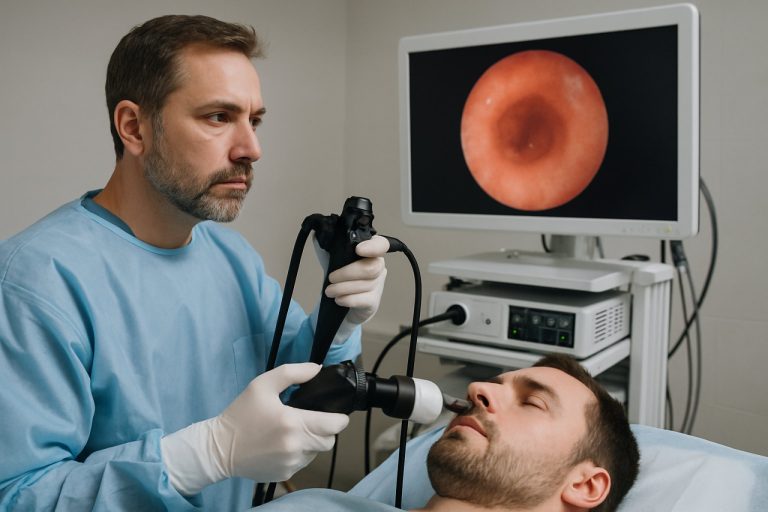
Table of Contents
- Executive Summary: Key Findings & Industry Highlights
- Market Size, Growth Projections & Forecasts to 2029
- Emerging Technologies in Wastewater Surveillance Analytics
- Regulatory Landscape & Global Policy Drivers
- Top Industry Players: Recent Innovations & Strategic Moves
- Applications: From Disease Detection to Environmental Monitoring
- Investment Trends and Funding Outlook
- Integration with AI, IoT, and Advanced Data Platforms
- Challenges: Data Privacy, Standardization, and Adoption Barriers
- Future Outlook: Opportunities, Game-Changers, and Next Steps
- Sources & References
Executive Summary: Key Findings & Industry Highlights
Wastewater surveillance analytics is rapidly evolving into a cornerstone of public health monitoring, environmental protection, and industrial compliance. In 2025, the field is characterized by the integration of advanced molecular detection methods, robust data analytics platforms, and real-time reporting solutions. The COVID-19 pandemic accelerated adoption and investment in wastewater-based epidemiology, and this momentum continues as governments and private entities recognize its broader value for surveillance of pathogens, pharmaceuticals, and illicit substances.
Key industry players are scaling up their offerings, leveraging both hardware and cloud-based analytics to provide scalable, actionable insights. Companies like Xylem and IDEX Corporation are expanding their portfolios with automated sampling and analysis systems, while technology leaders such as Thermo Fisher Scientific and Agilent Technologies are refining high-throughput genetic and chemical assays optimized for wastewater matrices. These advancements are complemented by software solutions from firms like Arcadis, which enable public health authorities to interpret complex datasets and respond to emerging threats with greater agility.
The analytics landscape is increasingly shaped by partnerships between utility operators, health agencies, and technology providers. For instance, several national wastewater surveillance programs—supported by companies such as Xylem—are now integrating artificial intelligence and machine learning to detect trends in microbial populations and identify early signals of disease outbreaks. Data standardization and interoperability remain strategic priorities, as organizations collaborate to ensure data comparability across regions and platforms.
Looking ahead, the next few years will see expansion beyond COVID-19 tracking into surveillance for antimicrobial resistance, polio, hepatitis, and even community-level consumption of controlled substances. The environmental sector is also adopting wastewater analytics to monitor industrial discharge and nutrient loading in real time. Regulatory frameworks are expected to evolve in parallel, with international bodies and national governments formalizing guidelines for data collection, sharing, and privacy.
- Adoption of real-time, cloud-based analytics for rapid decision support
- Expansion into multi-pathogen surveillance and chemical exposure monitoring
- Growing emphasis on data privacy and standardized protocols
- Public-private partnerships driving innovation and scaling
- Continued investment in automation and AI-powered trend detection
Overall, wastewater surveillance analytics in 2025 is becoming a mature, indispensable tool for public health and environmental management, underpinned by robust technological ecosystems and expanding regulatory support.
Market Size, Growth Projections & Forecasts to 2029
The global market for wastewater surveillance analytics is poised for significant growth through 2029, driven by increasing adoption among municipalities, utilities, public health agencies, and industrial sectors. As of 2025, the market is experiencing heightened demand following the pivotal role of wastewater analytics in tracking SARS-CoV-2 and emerging pathogens. This adoption has solidified wastewater-based epidemiology as a critical public health tool, prompting steady investments in analytics infrastructure and data platforms.
Current market estimates indicate that North America and Europe remain the leading regions in deploying advanced wastewater analytics, with a growing number of pilot projects and citywide implementations. Notably, partnerships between analytics providers and water utilities are accelerating, with organizations such as Xylem Inc. and IDEXX Laboratories expanding their offerings to include real-time pathogen detection, data dashboarding, and predictive analytics solutions tailored for wastewater applications. These companies are leveraging cloud-based technologies and artificial intelligence to enhance the speed and accuracy of surveillance data interpretation.
The market’s compound annual growth rate (CAGR) is projected to remain robust—industry consensus points to double-digit annual growth through 2029, reflecting expanding governmental mandates, increased funding for wastewater monitoring, and the integration of analytics with broader environmental data systems. National initiatives, such as those led by the U.S. Centers for Disease Control and Prevention’s National Wastewater Surveillance System (NWSS), are fostering standardization and scaling of data analytics, thereby boosting market penetration and technological advancement.
- Technological innovation: Providers are integrating machine learning and automation to improve anomaly detection and forecast emerging threats, as seen in the offerings of Thermo Fisher Scientific and ABB Group.
- Expanding customer base: Besides public health agencies, industrial sectors—food processing, pharmaceuticals, and chemicals—are increasingly adopting surveillance analytics for regulatory compliance and risk management.
- Global expansion: Emerging economies in Asia-Pacific and Latin America are beginning to invest in wastewater analytics, supported by international development organizations and growing urban populations.
Looking ahead to 2029, market outlook remains optimistic, with analytics platforms expected to evolve toward more comprehensive, multi-target surveillance, integration with geographic information systems, and real-time public health reporting. The increasing frequency of pathogen threats, antibiotic resistance monitoring, and environmental sustainability imperatives will further drive adoption and expansion of wastewater surveillance analytics worldwide.
Emerging Technologies in Wastewater Surveillance Analytics
Wastewater surveillance analytics is experiencing rapid evolution in 2025, driven by emerging technologies that aim to provide earlier, more accurate, and actionable insights for public health and environmental management. As urbanization and industrialization intensify, the need for real-time, scalable, and sensitive analytics within wastewater monitoring systems has become increasingly apparent.
A key trend in 2025 is the integration of advanced biosensors and molecular detection platforms directly into wastewater treatment infrastructure. These devices, which leverage developments in microfluidics and lab-on-chip technology, allow for continuous, on-site detection of pathogens, pharmaceuticals, and chemical contaminants. Companies such as ABB and Siemens are actively incorporating smart sensors into their automation portfolios, enabling utilities to deploy distributed networks that feed real-time data into centralized analytics platforms.
Parallel to sensor development, artificial intelligence (AI) and machine learning (ML) algorithms are transforming data interpretation. These tools facilitate rapid pattern recognition, anomaly detection, and predictive modeling, empowering utilities and public health agencies to detect outbreaks, illicit discharges, or industrial pollution events with greater confidence and speed. In 2025, digital twin technology is being employed by organizations like Xylem to simulate wastewater network dynamics, enhancing scenario planning and asset management.
Cloud-based data management systems are now standard among leading providers, allowing for secure aggregation, sharing, and visualization of high-frequency analytical data. This trend supports the growing movement toward open data standards and interoperability, which is crucial for coordinated regional or national wastewater surveillance programs. The adoption of blockchain for data integrity and traceability is also emerging, with ongoing pilots led by several water technology innovators.
Looking forward, the next few years are expected to see increased miniaturization and cost reduction in sensor manufacturing, further democratizing access to real-time wastewater analytics. The convergence of genomics, AI, and IoT is poised to expand the range of detectable targets, from antimicrobial resistance genes to designer drugs and emerging synthetic chemicals. Industry collaborations, such as those led by Veolia and SUEZ, are accelerating the deployment of integrated analytical platforms that combine sampling, detection, and cloud analytics, supporting proactive environmental stewardship and public health protection.
Regulatory Landscape & Global Policy Drivers
The regulatory landscape for wastewater surveillance analytics is evolving rapidly in 2025, shaped by heightened public health awareness and global policy efforts to monitor pathogens, pharmaceuticals, and chemicals of emerging concern. The COVID-19 pandemic catalyzed the adoption of wastewater-based epidemiology (WBE) as a cost-effective, population-level monitoring tool. In response, regulatory bodies are formalizing frameworks for routine wastewater surveillance, particularly for pathogens such as SARS-CoV-2, poliovirus, and antimicrobial resistance genes.
In the United States, the Environmental Protection Agency (EPA) and the Centers for Disease Control and Prevention (CDC) have expanded wastewater surveillance programs and issued updated technical guidance for sample collection, analysis, and data reporting. The CDC’s National Wastewater Surveillance System (NWSS) continues to serve as a cornerstone for pathogen monitoring, with efforts underway to standardize analytics and reporting protocols nationwide. The EPA’s involvement ensures integration of chemical and microbial risk assessments in wastewater analytics, further driving regulatory alignment across state and federal levels (United States Environmental Protection Agency).
The European Union is progressing with its “Urban Waste Water Treatment Directive” revisions, which, as of 2025, propose mandatory monitoring of public health indicators—including viruses and pharmaceuticals—in urban wastewater. The European Commission is also supporting the “EU Sewage Sentinel System,” aiming to harmonize surveillance methodologies among member states and facilitate rapid data sharing (European Commission). The European Centre for Disease Prevention and Control (ECDC) continues to provide technical standards and cross-border coordination for wastewater analytics, emphasizing early warning for outbreaks and antimicrobial resistance (European Centre for Disease Prevention and Control).
Globally, the World Health Organization (WHO) is working with national governments to develop international guidelines for wastewater surveillance, with a focus on low- and middle-income countries where analytical infrastructure is growing. These policies prioritize capacity building, quality assurance, and equitable access to surveillance technologies (World Health Organization).
Looking ahead, regulatory drivers will likely include expanded lists of target analytes, increased requirements for real-time data analytics, and integration with health and environmental data systems. The push for global harmonization will be reinforced by the lessons learned from pandemic response and the growing recognition of wastewater analytics as a critical component of public health infrastructure.
Top Industry Players: Recent Innovations & Strategic Moves
The wastewater surveillance analytics sector has entered a phase of rapid expansion and innovation in 2025, driven by heightened demand for public health monitoring, early pathogen detection, and environmental compliance. Major industry players are capitalizing on technological advancements and strategic partnerships to enhance data accuracy, scalability, and actionable insight delivery.
One of the sector’s leaders, IDEX Corporation, has continued to invest in advanced sensor technologies and data platforms, supporting municipalities and utilities in real-time monitoring of wastewater streams. In early 2025, IDEX expanded its analytics suite to integrate machine learning algorithms for more precise anomaly detection and predictive outbreak modeling. Such capabilities are becoming essential as public health agencies emphasize early warning systems for viral and antimicrobial resistance threats.
Another prominent player, Thermo Fisher Scientific, has broadened its wastewater surveillance offerings with high-throughput qPCR and genomic sequencing solutions tailored for wastewater samples. In the past year, Thermo Fisher launched a cloud-based data analytics portal, enabling clients to visualize trends and respond swiftly to new health threats. This aligns with a broader trend toward cloud-native platforms, facilitating secure data sharing among utilities, health departments, and research institutions.
In the realm of digital analytics and AI integration, Xylem has announced strategic collaborations with municipal water agencies to deploy AI-driven analytics for source tracking and population health assessment. Xylem’s 2025 initiatives include the roll-out of customizable dashboards and real-time alerting systems, supporting rapid decision-making at the city and regional levels.
Additionally, SUEZ has accelerated its investment in European and Asian markets, leveraging its expertise in environmental services to deliver end-to-end wastewater monitoring solutions. SUEZ’s recent offerings integrate advanced analytics with automated sampling and laboratory services, aiming to provide a full-stack approach from sample collection to actionable intelligence.
Looking ahead, the next few years are expected to bring further integration of AI, edge computing, and multi-pathogen monitoring capabilities. Industry leaders are anticipated to deepen partnerships with health authorities and expand interoperability standards, ensuring that wastewater surveillance analytics underpin resilient public health infrastructure worldwide. With regulatory frameworks evolving and digital transformation accelerating, the competitive landscape will continue to reward those companies that combine robust analytics with scalable, user-friendly platforms.
Applications: From Disease Detection to Environmental Monitoring
Wastewater surveillance analytics is emerging as a critical tool in both public health and environmental monitoring, with expanding applications in 2025 and anticipated rapid advancements over the next several years. The discipline leverages advanced data analytics, molecular biology, and sensor technologies to detect, quantify, and interpret the presence of pathogens, pharmaceuticals, and chemical markers in communal wastewater, offering actionable insights at the population level.
In 2025, the most prominent application remains infectious disease tracking, particularly in response to the COVID-19 pandemic and ongoing concerns about viral outbreaks. Public health departments are integrating wastewater analytics into their epidemiological toolkits to provide early warnings of surges in SARS-CoV-2 as well as other respiratory and enteric viruses. Companies such as Biobot Analytics and Abbott Laboratories are among those developing and deploying high-throughput analytics platforms that automate sample processing, digital PCR, and data visualization for municipal clients and universities. Their solutions enable near real-time surveillance, allowing for rapid policy interventions and resource allocation.
Beyond infectious diseases, wastewater analytics is increasingly used for monitoring antimicrobial resistance (AMR), illicit drug consumption trends, and environmental contaminants. Organizations like IDEXX Laboratories are advancing multiplex testing kits that can detect a range of targets, including antibiotic resistance genes, pharmaceuticals, and industrial chemicals. This facilitates a holistic assessment of community health, environmental quality, and potential threats such as chemical spills or emerging pollutants.
From a data perspective, the field is witnessing the integration of machine learning and artificial intelligence to improve the sensitivity, specificity, and interpretability of wastewater data. Predictive analytics are being refined to forecast outbreak trends, model environmental impacts, and support public health decision-making. Cloud-based dashboards and open-data platforms are gaining traction, promoting transparency and cross-jurisdictional collaboration. For instance, Xylem Inc. is enhancing its digital solutions to support large-scale data aggregation, visualization, and analytics for utilities and public agencies.
Looking ahead, the outlook for wastewater surveillance analytics is robust. Regulatory bodies and industry organizations are expected to establish new standards for data collection, privacy, and reporting, further legitimizing the discipline. The expansion of sensor networks, combined with declining costs of genomic sequencing and digital infrastructure, is likely to make wastewater analytics a mainstay in public health, environmental monitoring, and even urban planning through 2025 and beyond.
Investment Trends and Funding Outlook
The investment landscape for wastewater surveillance analytics is rapidly evolving as public and private stakeholders recognize its value for early-warning systems, public health monitoring, and environmental safety. In 2025, funding is being driven by lessons learned from the COVID-19 pandemic, which demonstrated the effectiveness of wastewater-based epidemiology (WBE) in tracking viral outbreaks and emerging pathogens. As a result, government agencies, utilities, and technology companies are increasing investments in analytical platforms and infrastructure that can process large-scale wastewater data in real time.
Recent events highlight this momentum. For example, in 2024 and 2025, the U.S. government expanded its National Wastewater Surveillance System (NWSS), providing grants and technical support to local and state health departments to build capacity for sustained wastewater monitoring. Similarly, the European Union’s EU4Health programme continues to allocate substantial funding to support member states in establishing harmonized wastewater surveillance systems, with a focus on analytics and data integration capabilities. Investments are also being directed towards enhancing the digital backbone of these platforms, including secure data sharing, AI-driven analytics, and cloud-based dashboards.
Private sector involvement has grown, with major water analytics and instrumentation companies scaling up their offerings for wastewater surveillance. Companies such as Xylem and Thermo Fisher Scientific are investing in advanced sensors, automated sampling, and data analytics tools tailored for wastewater epidemiology. These firms are developing partnerships with municipalities and public health authorities to deploy end-to-end solutions, from sample collection to actionable analytics. Additionally, startups specializing in machine learning and bioinformatics are attracting venture capital to accelerate the development of predictive models and pathogen detection algorithms.
Looking ahead, the outlook for funding in wastewater surveillance analytics is robust. Analysts expect continued government support as part of broader pandemic preparedness and environmental health strategies. The integration of wastewater data with other public health and environmental datasets is anticipated to drive further investment in interoperability and data standardization. Furthermore, as regulatory frameworks evolve to mandate routine monitoring of key pathogens and chemical contaminants, utilities and private labs are likely to increase capital expenditures on analytics infrastructure.
Overall, the confluence of public investment, regulatory drivers, and private innovation is set to propel wastewater surveillance analytics into a core component of public health and environmental monitoring over the next several years.
Integration with AI, IoT, and Advanced Data Platforms
The integration of Artificial Intelligence (AI), Internet of Things (IoT), and advanced data platforms is rapidly transforming wastewater surveillance analytics in 2025 and is poised to further accelerate in the coming years. Wastewater surveillance has shifted from periodic sampling and manual data interpretation to continuous, automated monitoring and real-time analytics, enabling earlier detection of pathogens, illicit substances, and emerging contaminants. This transformation is largely powered by smart sensor networks, cloud computing, and AI-driven analytics platforms.
IoT-enabled sensor deployments now provide high-frequency, granular data streams from collection points throughout municipal and industrial wastewater systems. These sensors, produced by sector leaders such as Siemens and Xylem, measure parameters including viral load, chemical composition, flow dynamics, and temperature. These data streams are transmitted in real time to centralized platforms, where AI algorithms—often developed or implemented by technology partners like IBM—automatically analyze trends, detect anomalies, and issue alerts to public health and utility officials.
In 2025, several large cities and utilities have begun to leverage advanced data platforms capable of ingesting and harmonizing multi-modal data inputs from wastewater, environmental sensors, and public health records. These platforms, such as those offered by Veolia, support machine learning models that can forecast infection outbreaks or system failures with increasing accuracy. Cloud-based solutions allow secure sharing of aggregated insights across agencies, supporting coordinated responses to outbreaks or contamination events.
Recent deployments demonstrate the convergence of AI and IoT in actionable wastewater surveillance. For example, automated early-warning systems in metropolitan areas can now flag viral RNA spikes hours or days before clinical case surges, facilitating faster interventions. Predictive maintenance, enabled by continuous sensor data and AI diagnostics, helps utilities optimize asset performance and reduce operational costs.
Looking ahead, industry stakeholders anticipate further advances in AI-powered analytics, including deeper integration with health informatics systems and broader adoption of open data standards. Ongoing collaboration between technology providers, utilities, and public health agencies will be crucial to scaling these solutions globally. As regulatory frameworks evolve to embrace digital monitoring and data-driven decision-making, wastewater surveillance analytics is expected to become an even more critical component of resilient infrastructure and public health strategies.
Challenges: Data Privacy, Standardization, and Adoption Barriers
As wastewater surveillance analytics become increasingly prominent in public health and environmental monitoring, the sector faces a complex landscape of challenges in 2025 and beyond. Key concerns focus on data privacy, standardization, and broad adoption barriers, all of which will shape the trajectory and societal acceptance of these technologies.
Data Privacy: Wastewater surveillance can yield granular insights at the community and even sub-community level, raising the specter of privacy infringements. In many regions, there is growing debate over how to balance public health benefits with the rights of individuals and groups, particularly as analytics become more precise and are used for pathogens, illicit drugs, or other biomarkers. Efforts to anonymize and aggregate data are ongoing, with industry leaders like Xylem and Thermo Fisher Scientific emphasizing robust protocols and secure data infrastructure in their workflows. The sector anticipates that regulatory frameworks—both national and international—will need to evolve, potentially introducing data stewardship roles and stricter consent mechanisms.
Standardization: The rapid proliferation of wastewater monitoring technologies has resulted in disparate methodologies for sample collection, data analysis, and reporting. In 2025, lack of harmonized standards is a recognized impediment to data comparability and large-scale analytics. Industry organizations such as the Water Environment Federation are actively collaborating on best practices and consensus guidelines. Manufacturers like IDEX Corporation and ABB are also integrating adaptable, standards-ready solutions into their instrumentation. Standardization is expected to accelerate as governments and international bodies push for interoperable systems, especially in the context of pandemic preparedness and environmental protection.
Adoption Barriers: Despite growing recognition of the value of wastewater analytics, adoption remains uneven across regions and sectors due to a mix of technical, financial, and organizational barriers. Smaller municipalities and low-resource settings often lack the capital or expertise to implement and maintain advanced surveillance systems. To bridge this gap, companies such as Veolia are developing modular, scalable platforms and offering managed service models. Furthermore, public trust and stakeholder engagement are essential, as concerns over surveillance and data usage can slow program rollout. Training programs and transparent communication strategies, championed by organizations like the European Water Association, are viewed as critical enablers for broader adoption.
Looking ahead, the interplay between technological innovation, regulatory evolution, and public acceptance will determine the pace and effectiveness of wastewater surveillance analytics deployment. Stakeholders anticipate that overcoming privacy, standardization, and adoption challenges will be pivotal for realizing the full potential of these systems in safeguarding public health and the environment.
Future Outlook: Opportunities, Game-Changers, and Next Steps
Wastewater surveillance analytics is poised for significant advancements in 2025 and the years immediately following, driven by technological innovation, regulatory momentum, and growing recognition of the field’s value in public health and environmental management. A major opportunity lies in the expansion of real-time analytics platforms that can provide near-instantaneous detection of pathogens, chemical contaminants, and emerging threats. Companies such as Xylem and IDEXX Laboratories are actively developing and deploying digital solutions that enable municipalities and utilities to make data-driven decisions based on wastewater signals.
Key game-changers on the horizon include the integration of artificial intelligence (AI) and machine learning with high-throughput sequencing and sensor networks. These technologies promise to enhance the sensitivity, specificity, and predictive power of wastewater analytics, enabling early warning systems for outbreaks of infectious diseases such as COVID-19 or even polio, as well as monitoring antimicrobial resistance and illicit drug usage. For example, Thermo Fisher Scientific is expanding its portfolio to support metagenomics and rapid analytics, empowering public health agencies to respond more swiftly to trends detected in community wastewater.
Standardization and harmonization of data collection protocols will be crucial to scale the impact of wastewater surveillance analytics. International and national entities are collaborating to establish frameworks for data sharing, privacy protection, and cross-border comparability. The World Health Organization (WHO) and regional bodies are expected to provide updated guidance in the near future, setting the stage for wider adoption and interoperability of surveillance systems.
Looking ahead, the next steps for the sector involve scaling up from pilot and regional initiatives to fully integrated, city- and nation-wide surveillance networks. This will require investments in infrastructure, workforce training, and public engagement to realize the full potential of wastewater analytics as a sustainable and proactive tool for health and environmental protection. In parallel, the evolving regulatory landscape, with anticipated policy drivers from agencies like the United States Environmental Protection Agency, will incentivize broader implementation of advanced monitoring solutions.
Overall, the future of wastewater surveillance analytics in 2025 and beyond is characterized by accelerated digital transformation, strong public-private partnerships, and a shift toward predictive, preventative public health and environmental stewardship. Companies and organizations at the forefront are expected to shape new industry standards and unlock actionable insights from the vast data streams generated by wastewater systems worldwide.



